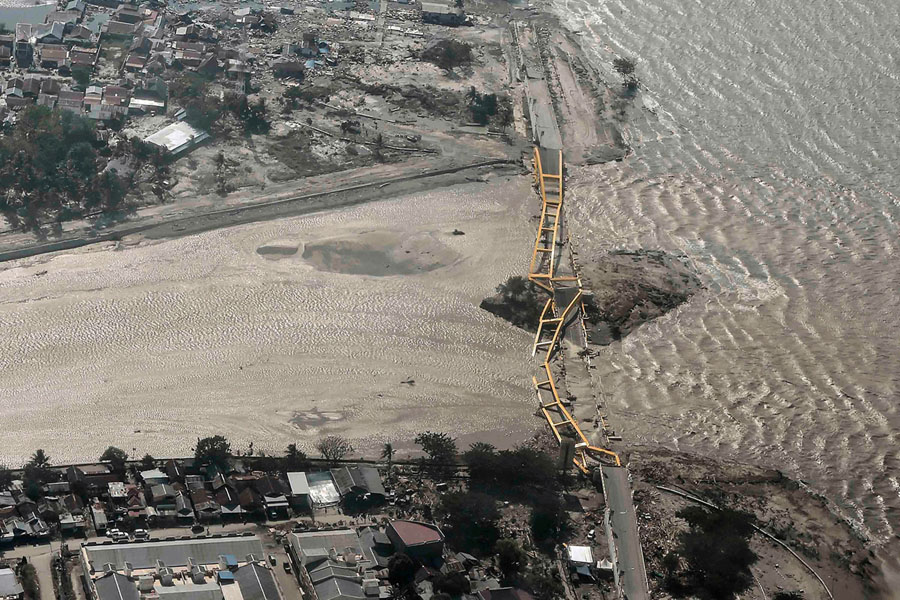We have all heard about the dramatic earthquake and tsunami in Sulawesi, Indonesia, where the official death toll is now over 1,600 and still increasing every day. Now, more than a week later, emergency aid is finally starting to reach the inhabitants of the island [1].
The current technological developments can save a lot of lives after these kinds of disasters. Researchers of Harvard University have, in cooperation with Google, recently developed neural networks that are better able to predict the place and intensity of aftershocks than traditional prediction models [2]. This information can be used to prepare and, if necessary, evacuate inhabitants from these places. AI can also be used to answer distress calls, determine the type of emergency and the location of the callers, and prioritize them [3].
In addition, drones can be used in a number of ways. First, they can be used to map the affected area [4]. Machine learning can then be used to analyze the footage, assess the damage, and prioritize the areas based on the degree of emergency [3]. This way, emergency teams know which areas to focus on first in their aiding efforts. Second, drones can be used to reach people who are in remote or difficult to reach areas. In Sulawesi, for example, it is hard to reach people since many roads are blocked or flooded and bridges have collapsed [5]. With drones, it is possible to send medical and food supplies to those areas [4][6].
Naturally, these technologies require large investments by NGOs and governments around the world. However, as soon as these technologies can be developed and implemented on a large scale, a lot of lives can be saved. Hopefully this will happen before another disaster like the Sulawesi earthquake occurs.
Sources:
[1] https://www.washingtonpost.com/world/asia_pacific/the-latest-indonesia-disaster-death-toll-rises-to-1649/2018/10/06/4a052266-c93d-11e8-9c0f-2ffaf6d422aa_story.html?noredirect=on&utm_term=.285d6732db3d
[2] https://www.nature.com/articles/s41586-018-0438-y
[3] https://hub.packtpub.com/ai-rescue-5-ways-machine-learning-can-assist-emergency-situations/
[4] https://safetymanagement.eku.edu/resources/articles/5-ways-drones-are-being-used-for-disaster-relief/
[5] https://nos.nl/artikel/2252820-rampgebied-sulawesi-moeilijk-te-bereiken-vrees-voor-duizenden-doden.html
[6] https://reader.elsevier.com/reader/sd/pii/S2212420918302000?token=B67D00C6BE50D23C316770864D43E88FC7508DEAEFB524CC21B1FCE92C348D487B17EC2B2015BD83EB26069BDC8A9816
Picture: a damaged bridge in Palu, Sulawesi: https://www.theatlantic.com/photo/2018/09/photos-from-the-deadly-earthquake-and-tsunami-in-indonesia/571765/


